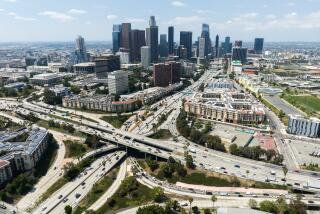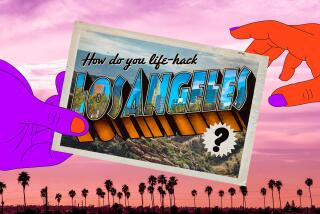Easing Quake Disruptions
- Share via
* It will take at least a year and billions of dollars to repair the gaping holes of L.A.’s transportation system. But for thousands of workers, the digital superhighway can serve where the physical highway has collapsed--in a fraction of the time, at a fraction of the cost.
An estimated 6.6 million workers nationwide are telecommuters--employees of business or government who work full or part-time from home. Many of these workers live in the L.A. area, and Mayor Richard Riordan, city, state and federal officials should immediately take steps to increase their numbers, working with the business community and Pacific Bell.
A good start would be the establishment of a government-industry telecommuting task force. The task force’s primary role would be to identify which jobs, both public and private sector, could be performed from a remote location with no loss in productivity. The task force could then recommend employer incentives to support telecommuting options.
But that’s just for starters. What’s also needed is an ongoing effort to put digital technology to work for L.A.’s economy. Video-conferencing, wireless communications and other advancements offer cheap, non-polluting alternatives to commuting, and allow economic growth without increased strain on our fragile infrastructure.
The private sector is spending billions on the digital highway. By adapting current jobs to new technology, government can piggyback onto this enormous investment, increasing revenues and lowering costs into the future. Let’s start down this road now. It won’t collapse when the next disaster strikes.
GEORGE KOPP
Woodland Hills
* As I brace myself for my newly disrupted commuting experience from Santa Monica to downtown Los Angles, several ideas strike me as worth considering to alleviate the traffic problems while I-10 is reconstructed:
* Several alternate routes might become one-way streets to increase traffic flow.
* All stoplights on these routes might be recalibrated to increase the flow of traffic.
* Some streets might become “flexible” in their direction. For example, Olympic might be one-way east in the morning and then one-way west in the evening.
* All east and west streets might have no-stopping zones along their entire length to free up lanes and improve flow.
Finally, the city and county might designate certain lanes as bus-only lanes and increase the number of express bus services.
TAD SMITH
Los Angeles
More to Read
Sign up for Essential California
The most important California stories and recommendations in your inbox every morning.
You may occasionally receive promotional content from the Los Angeles Times.









